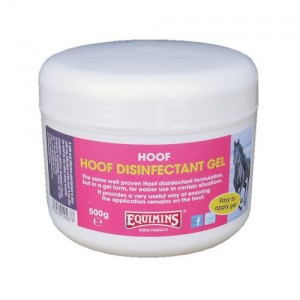Hoof care problems – thrush
Thrush is an unpleasant condition that is far from uncommon. The good news is that prompt treatment can quickly resolve the issue, and correct management can help to prevent the condition altogether.
So, what is it?
Thrush is a bacterial infection around the horse’s frog. It’s easy to identify because it creates a black discharge that has a very unpleasant smell.
Is it serious?
Yes and no. If left untreated it can damage the sensitive parts of the hoof, so it has the potential to be a serious issue. If the horse receives prompt treatment when thrush is discovered, it shouldn’t become a serious issue.
How is it caused?
There are a few aspects that can contribute to the development of thrush in the hoof. Poor stable management, where the horse stands in soiled bedding and/or manure, is not going to create a healthy environment for the hoof. Standing in mud all day every day with no dry area to retreat to is also more likely to cause you an issue. However, the conformation of some hooves are predisposed to hoof infection as deep frogs can make it much more difficult for the horse’s owner to ensure the hooves are clean when picked out each day.
How is it treated?
 The first thing is to remove the cause, so improve stable management if needed, or allow the horse to stand in in the dry if he lives out in the winter. The infected area needs to be thoroughly cleaned with an antibacterial formula and then a specialist product like Hoof Disinfectant or Hoof Disinfectant Gel should be applied. This should happen until the infection has gone. If the infection is more severe, you may require your farrier to come out and trim away the damaged frog. If the condition has been left untreated, it may cause lameness and, where this is the case, the vet should be called.
The first thing is to remove the cause, so improve stable management if needed, or allow the horse to stand in in the dry if he lives out in the winter. The infected area needs to be thoroughly cleaned with an antibacterial formula and then a specialist product like Hoof Disinfectant or Hoof Disinfectant Gel should be applied. This should happen until the infection has gone. If the infection is more severe, you may require your farrier to come out and trim away the damaged frog. If the condition has been left untreated, it may cause lameness and, where this is the case, the vet should be called.
How can it be prevented?
Good stable management, regular farrier visits and regular hoof care in the form of picking out the feet and checking them, as well as routine application of products like Hoof Disinfectant and Hoof Disinfectant Gel, should help to prevent the issue.
For more information on our Hoof range, just see the website.

 Equimins specialises in producing natural horse supplies, products and supplements for the major areas associated with caring for a horse. All products are proudly made in the UK and excellent specification quality products are of paramount importance. Using this blog we want to share some of the knowledge we have gained through nearly 30 years of experience.
Equimins specialises in producing natural horse supplies, products and supplements for the major areas associated with caring for a horse. All products are proudly made in the UK and excellent specification quality products are of paramount importance. Using this blog we want to share some of the knowledge we have gained through nearly 30 years of experience. 


